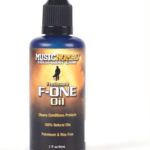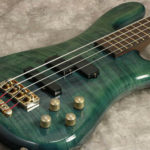Nut Filing
A nut is a fairly simple component that plays a major role in how playable your guitar is going to be. This little piece of bone or synthetic material determines the height of the string.
Sometimes, you will need to make adjustments to the nut in order to properly set your action. These adjustments will come in form of boosting or filing a nut.
In other words, you are either lowering or elevating the strings. The main thing to keep in mind while performing any of these two tasks is that you have a pretty small margin of error to work with. With that said, let's talk about the proper ways of adjusting the nut. In order to lower the string height, you will have to get some nut files. A lot of times, this is something you should let a luthier do rather than making it a part of your guitar maintenance routine. You won't do it often at all and it has to be just right, not to mention how precise of work it is.
Set the guitar on a flat surface so that the neck is fully supported. You want the guitar to not move at all, if possible. Start from the low E string and remove the string from the nut. Take the adequate nut file and start filing the slot under a slight angle towards the headstock.
The key is to remove small amounts of material and check if the string height is good enough. If you overdo it, you will have to replace the nut. Once you have done this for the low E string, repeat the process for the rest of the strings.





